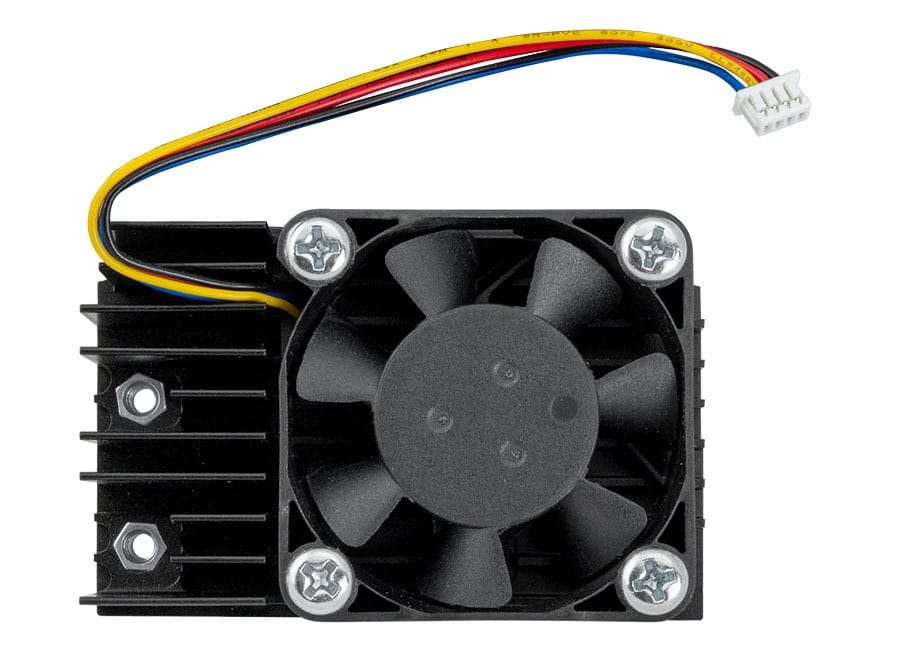20251ME1 Electronic Cooling System for NVidia Jetson or RPi5

Brief Description & Functionality
An electronic cooling system is essential for maintaining safe operating temperatures and ensuring optimal performance of compact computing boards like the NVIDIA Jetson series and the Raspberry Pi 5 (RPi5). These devices generate significant heat during AI processing or high GPU/CPU workloads. Without proper cooling, they may throttle performance or overheat.
The electronic cooling system works based on thermal management principles that involve heat transfer from hot components to cooler surroundings using mechanical and electronic elements.
Working Principles
Electronic cooling systems for devices like the NVIDIA Jetson series and the Raspberry Pi 5 are crucial to ensure stable performance and prevent overheating, especially during intense computational workloads. Both platforms support two main cooling approaches: passive and active cooling.
1. Passive cooling system
Description
Passive cooling relies on heat sinks, heat spreaders, or specially designed enclosures. These components use materials with high thermal conductivity (usually aluminum or copper) to absorb heat from the processor or other heat-generating parts, then dissipate it to the surrounding air via natural convection.
How it works
A thermal pad or thermal paste bridges the tiny gaps between the heat sink and the electronic component, enhancing heat transfer. The heat travels from the chip into the heat sink (conduction), spreads across its surface, and transfers to the air (convection). No fans or moving parts are involved, ensuring silent operation and improved reliability in dusty or industrial environments.
2. Active Cooling
Description
Active cooling adds mechanical elements (primarily fans or blowers) that force air across the heat sink or directly around the chip, greatly increasing heat dissipation compared to passive systems.
How it works
- The heat sink (or metal cooling plate) is attached to the key heat-producing chip using pre-applied thermal pads or thermal paste.
2. A small fan or blower is mounted atop or alongside the heat sink.
3. The fan is powered and speed-controlled by the device’s firmware: as the chip temperature rises, the fan speed increases, pushing cool air over the heat sink fins and expelling hot air from the enclosure.
4. This dynamic airflow enables more efficient heat transfer compared to passive cooling alone, keeping chip temperatures within safe limits even under intense loads.
5. Many modern systems use firmware or software to automatically adjust the fan based on temperature readings, engaging the fan at set thresholds.
Example: Active Cooling on Raspberry Pi 5
- Uses an anodized aluminum heatsink combined with an integrated, temperature-controlled blower fan.
- When the CPU gets hot, the built-in sensors and Pi firmware automatically ramp up the fan, blowing air over the heatsink to maintain a safe operating temperature and prevent CPU throttling.
- Users install the cooler by attaching the heatsink with push pins and plugging in the fan connector; thermal pads ensure optimal heat flow from chip to sink to air.
Example: Cooling Solutions for NVIDIA Jetson
- Cooling options include: Jetson-compatible fans with spring-loaded brackets, actively fanned heatsinks, and Passive heatsinks for fanless operation.
- Advanced applications may use liquid cooling or enhanced passive designs with heat pipes for rugged edge deployments or demanding AI processing.
- The fan speed and on/off logic can be managed and customized via system configuration, optimizing noise and power efficiency.
Market Survey

Skills Required
- PCB Design
2. CAD design
3. Manual Soldering
- Electronic testing
